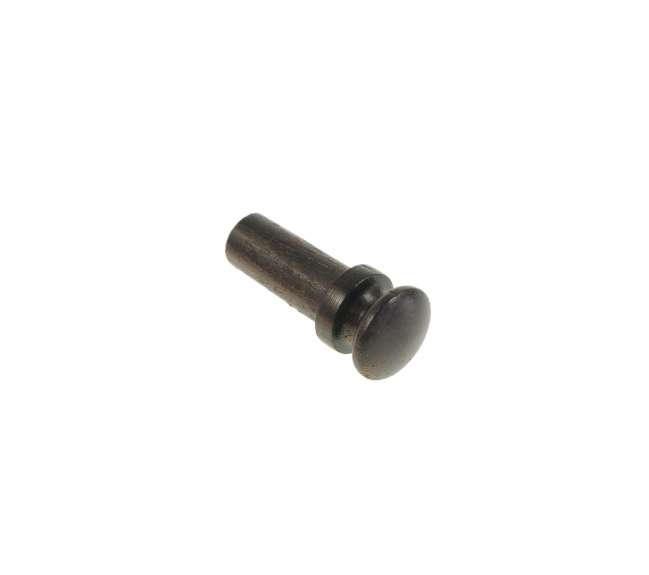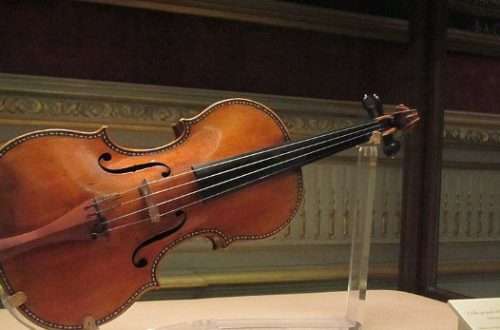
Violin and viola suit
The sound box is the largest and most important piece of acoustic instruments. It is a kind of loudspeaker in which the sounds generated by strings of the strings with a bow, hitting the piano with hammers, or plucking the strings in the case of a guitar, resound. In the case of string instruments, what “dresses” the instrument and allows you to put on the strings necessary to produce the sound is called a suit. It is a collection of usually three (sometimes four) elements placed on a violin or viola, consisting of a tailpiece, button, pegs, and in the case of four-piece sets, also a chin. These elements should be color-matched and made of the same material.
Tailpiece (tailpiece) It is the part of the suit that is responsible for keeping the strings on the chin side. It should be equipped with a loop, i.e. a line, that holds it on the button and allows for the appropriate tension of the strings. The tailpieces are sold separately, with a band or in complete suit sets. What influences the sound of a violin or viola is primarily the material of manufacture and the weight of the tailpiece. You should also check if it does not vibrate and does not cause any noise after putting it on, and that high pressure on the strings does not change its stability.
The basic models of tailpieces can be divided into two categories – wooden, with holes for strings or micro-tuners, and those made of plastic with built-in tuning screws. Professional musicians prefer the wooden ones, made of rosewood, boxwood, most often ebony. They are heavier, but in the case of such a small instrument as the violin, it does not cause any sound problems. Additionally, they can be decorated with a different color of the threshold or with ornamental eyelets. There are also wooden stringers with built-in micro-tuners on the market (e.g. from Pusch), although they are not that popular yet.

Button A button is an extremely important element – it maintains all the tension that the strings exert on the instrument. Because of this, it must be very solid and well-fitted, because loosening can have fatal consequences for the instrument, but also for the musician – strong tension can tear the tailings and stands, and such an accident may even cause cracks in the main plates of the violin or viola and the fall of the soul. The button is mounted in the hole on the bottom side of the violin, usually between the gluing. In the case of the cello and double bass, this is where the kickstand is located. If you are not convinced that the button is properly fitted to the instrument, it is best to consult a violin maker or an experienced musician.

Pins Pins are four string tensioning elements, located in holes in the head of the instrument, under the cochlea. They are also used to tune the instrument. The two left violin pegs are responsible for the G and D strings, the right one for A and E (similarly in the viola C, G, D, A). They have a small hole through which the string is inserted. They are characterized by the hardness of the material and high strength, which is why they are made almost exclusively of wood. They have various shapes and decorations, and there are also beautiful, hand-carved pegs with crystals on the market. However, the most important thing is that after installing the strings, they “sit” stably in the hole. Of course, in the event of unforeseen accidents, the pins can also be refilled into pieces, if we properly care for their matching to the set. If they fall off or get stuck, I recommend reading the article about problems tuning your instrument.

Due to the aesthetic fit, violin and viola suits are very often sold in sets. One of them is a very attractive a la Schweizer made of boxwood, with a decorative white cone, balls at the pegs and a button.
Choosing a suit for beginner musicians is almost purely an aesthetic matter. What influences the sound in a suit is a type of tailpiece, but these differences at the beginning of learning will be virtually imperceptible, if we only get good quality equipment. Professional musicians prefer to select accessories by parts to better check the individual fit of the accessories to the master instrument.
A new curiosity on the market are Wittner pins made of the newly developed Hi-tec material and light metal alloy. Thanks to the material, they are resistant to climate changes, and the gear for winding the strings reduces the friction of the pins against the holes in the head. Their set can cost up to PLN 300, but it is definitely worth recommending for musicians who travel a lot.





